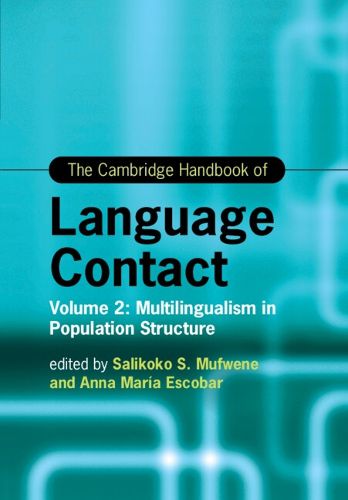Readings Newsletter
Become a Readings Member to make your shopping experience even easier.
Sign in or sign up for free!
You’re not far away from qualifying for FREE standard shipping within Australia
You’ve qualified for FREE standard shipping within Australia
The cart is loading…






Language contact - the linguistic and social outcomes of two or more languages coming into contact with each other - starts with the emergence of multilingual populations. Multilingualism involving plurilingualism can have various consequences beyond borrowing, interference, and code-mixing and -switching, including the emergence of lingua francas and new language varieties, as well as language endangerment and loss. Bringing together contributions from an international team of scholars, this Handbook - the second in a two-volume set - engages the reader with the manifold aspects of multilingualism and provides state-of-the-art research on the impact of population structure on language contact. It begins with an introduction that presents the history of the scholarship on the subject matter. The chapters then cover various processes and theoretical issues associated with multilingualism embedded in specific population structures worldwide as well as their outcomes. It is essential reading for anybody interested in how people behave linguistically in multilingual or multilectal settings.
$9.00 standard shipping within Australia
FREE standard shipping within Australia for orders over $100.00
Express & International shipping calculated at checkout
Language contact - the linguistic and social outcomes of two or more languages coming into contact with each other - starts with the emergence of multilingual populations. Multilingualism involving plurilingualism can have various consequences beyond borrowing, interference, and code-mixing and -switching, including the emergence of lingua francas and new language varieties, as well as language endangerment and loss. Bringing together contributions from an international team of scholars, this Handbook - the second in a two-volume set - engages the reader with the manifold aspects of multilingualism and provides state-of-the-art research on the impact of population structure on language contact. It begins with an introduction that presents the history of the scholarship on the subject matter. The chapters then cover various processes and theoretical issues associated with multilingualism embedded in specific population structures worldwide as well as their outcomes. It is essential reading for anybody interested in how people behave linguistically in multilingual or multilectal settings.